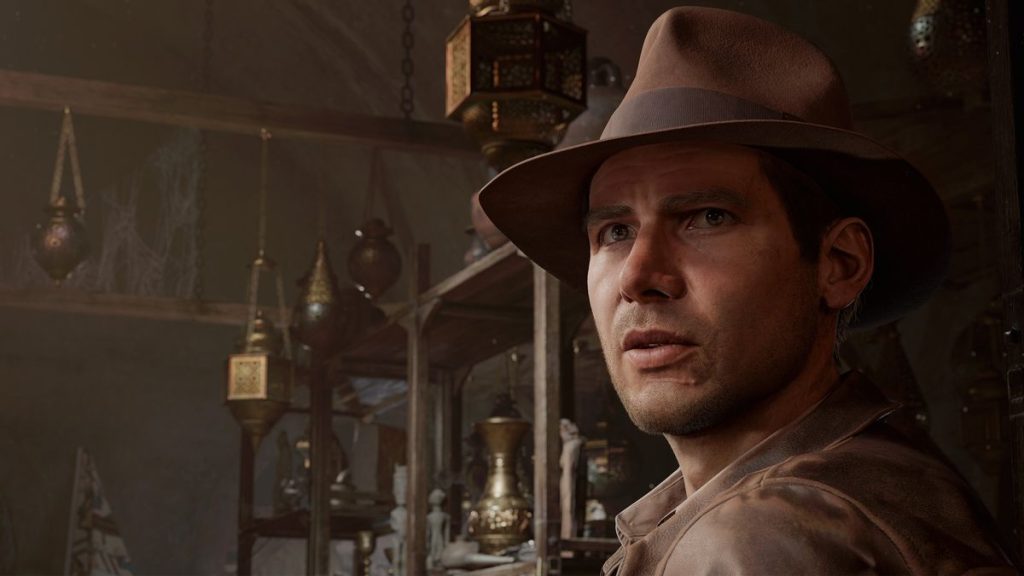Shortly before my encounter with Indiana Jones and the Great Circle, a developer from MachineGames explained that it is “not action-adventure, but action-adventure.” He promises that it's not just a cinematic skin over the studio's usual FPS combat, but rather prioritizes the feel of an Indiana Jones adventure. The problem is that it's only half true.
As a statement of intent, this is exactly what you would want. It certainly wouldn't seem true to character if Jones simply went from room to room mowing down Nazis like BJ Blazkowicz. You want to see him butt a few heads, sure, but also explore, escape, pursue, outwit, and generally achieve the impossible. The problem is that I don't think what the studio is offering here is really “action adventure”. After about three hours of playtime, I think this is essentially a stealth game.
As my demo takes me from Marshall College to Vatican City to the Pyramids of Giza, what I mostly do is crouch behind boxes while waiting for guards to pass by. That's not to say it's bad or boring stealth – it's generally light and forgiving enough that you can blast your way through it fairly quickly, and cinematic touches give it some extra spice. Stealth kills, for example, require an improvised, single-use weapon from the environment each time, meaning you're constantly smashing shovels, wine bottles, pokers, and pans over the heads of the Nazis. It's just a good old fashioned time.
When you are spotted, it rarely ends your mission. The guards seem happy to get into a quick fight with you rather than running away to sound the alarm, using the simple but satisfying melee combat system. Despite their thunderous impact, your punches rarely attract wider attention, so once the guy in front of you is down, you're free to return to the shadows. Gunfire is the only thing that can truly bring the entire Reich down on you, and this is easily avoided: your whip can knock weapons out of enemies' hands, in which case they forget they ever had one and their thirst for punches takes over.
It's a slightly chaotic and precarious kind of stealth by design. I'm sure you can sneak around Nazi bases like an invisible ghost if you really make the effort, but it felt natural to oscillate between effective stealth and moments of panicked brawling. This speaks to Jones' scrappy, downtrodden nature: he's not a ninja, he's an improviser.
But I also don't think there's a ton of meat here for those who like tense stealth experiences. To enhance that cinematic feel, the guards were created about as intelligent as the heavy objects you frequently hit them with, and while there are elements of immersive simulation design, such as alternate routes to discover, they are all very light. This keeps things from becoming too slow and cerebral, but when stealth is the main experience, I worry that the systems here will be a little too shallow to stretch over an entire game.
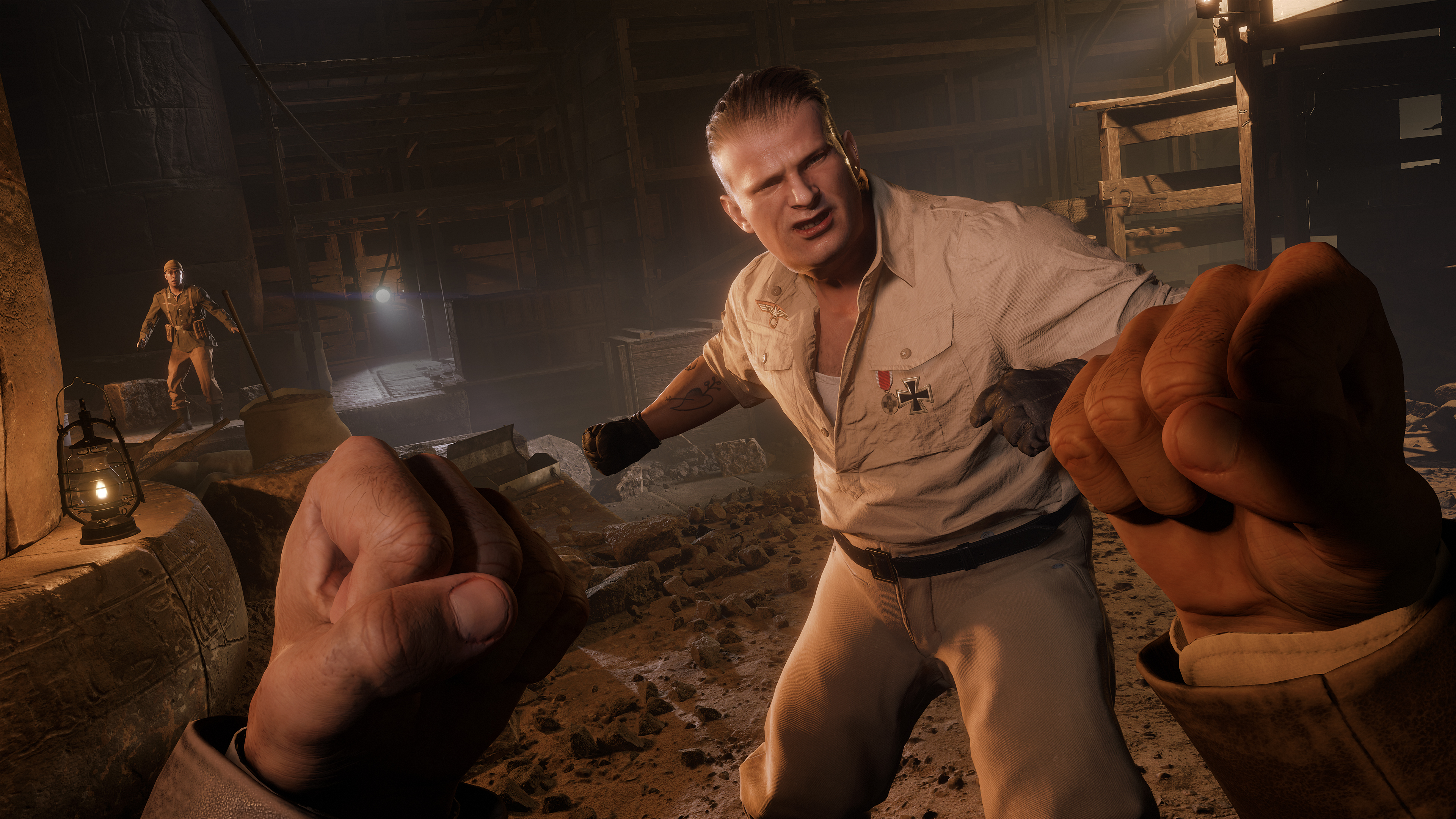
In Vatican City, I sneak into a fortress taken by Mussolini's thugs. Its cramped, relatively linear confines are ideal for both learning the stealth system and seeing it at its best, with secrets to discover, locked doors offering shortcuts if their keys can be found, and numerous isolated guards waiting to be found. being hit on the head. It's a short but satisfying sequence that leaves me curious to see how the formula expands from there.
The next section I find myself in couldn't be more different. The vast Giza Desert is a big open map that I'm free to roam as I please, with a handful of different objectives encouraging me to find my own winding path through it. With Nazi camps scattered all around and patrols roaming the sand, stealth remains key, but this is where I see it at its weakest.
I enjoy the increased agency and more organic feel: it's up to me to decide where I want to sneak in and how, rather than going through a series of predefined encounters. But the wide open spaces between camps are frustrating to navigate, with lookouts always ready to spot you and nothing to hide behind, and the camps themselves don't seem well designed to encourage player creativity.
Too often, the slightly awkward climbing controls direct you down limited paths or make exiting the stage unintuitive (you can jump and lift yourself over ledges and obstacles, but it's often unclear which ones can can be crossed and which cannot), and the placement of guards and obstacles can seem strangely random. A platform that you can visibly swing to has nothing on it and leads nowhere, while an area that you are forced to cross to reach an objective has a density of guards that you don't really have the tools for to cross with elegance.
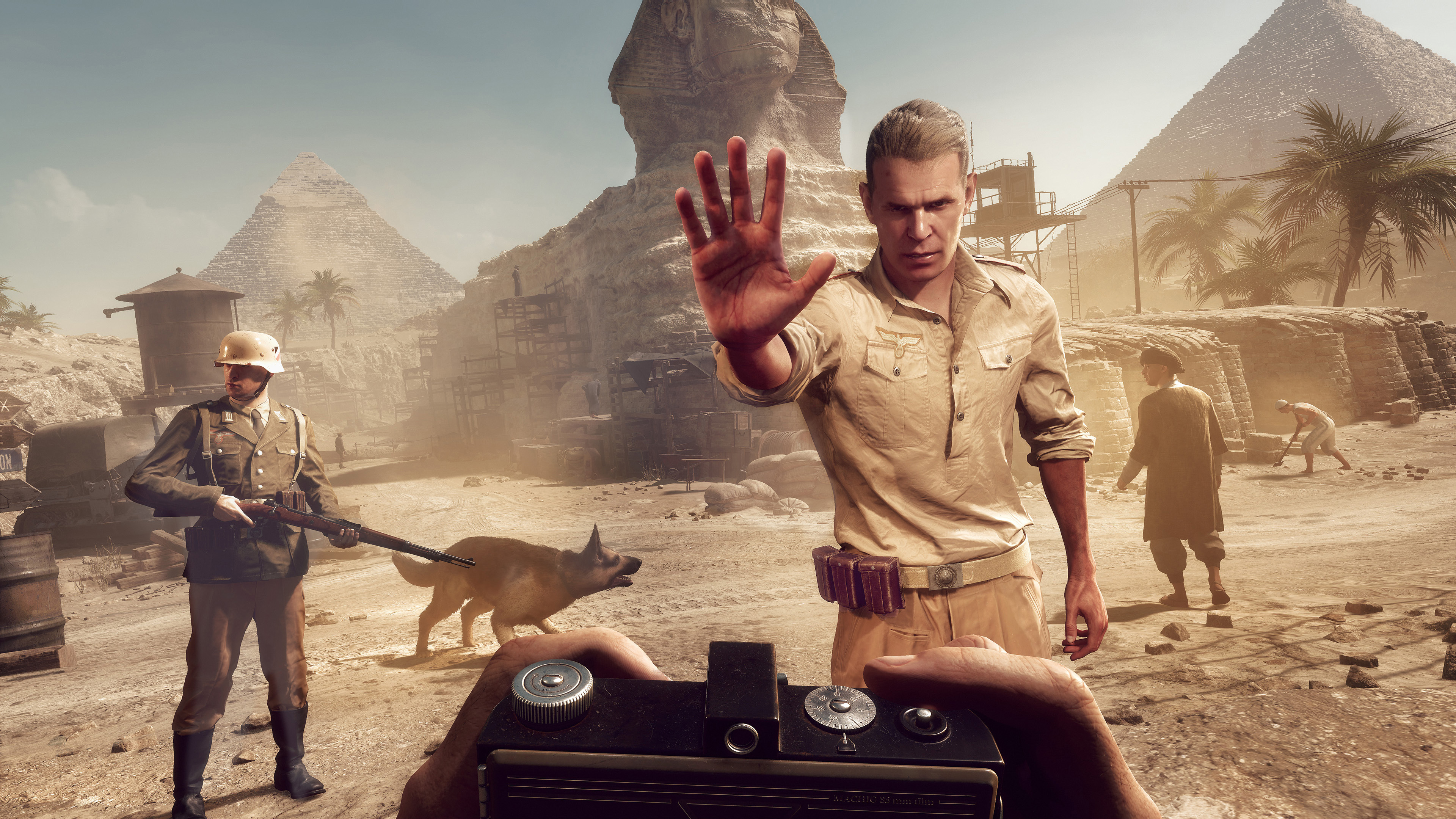
This tomb raiding sequence is strictly linear and scripted, leading me between insultingly simple puzzles and fairly clunky platforming sequences.
Once I discovered a disguise, everything started to make a lot more sense: suddenly I could just walk past a lot of these guards, with only the occasional officer savvy enough to continue to consider me like a threat. Now I could go wherever I wanted with ease, as long as I kept my cool. But that just means that the friction of these open furtive encounters is replaced by… well, nothing. Empowering, but a little boring. The developer also had to strongly suggest that I look for this disguise before the session started, and even tell me where it was on the map, to make sure I found it quickly – necessary, perhaps, for an event press where time is limited, but I wonder how long I could have wandered frustrated without it, having to squeeze everywhere through an entire desert.
Fortunately, we don't need to know that. Instead, properly dressed, I can walk straight into a Nazi dig site and finally do something other than stealth. Beneath the sands lies an ancient Egyptian tomb ready to be explored, and I even have a brave sidekick joining me. It's now an Indiana Jones adventure!
But after wanting something other than stealth, when I finally get it, it's less of a breath of fresh air (or dusty underground air) than I'd hoped. This tomb raiding sequence is strictly linear and scripted, leading me between insultingly simple puzzles and fairly clunky platforming sequences that have me uncomfortably switching to third person to get through a gap or hang on to a ledge. Players often complain that developers splash yellow paint everywhere to make it clear where you need to go, but The Great Circle has the opposite problem: your next grip or swing point often blends into the background, which makes progress difficult.
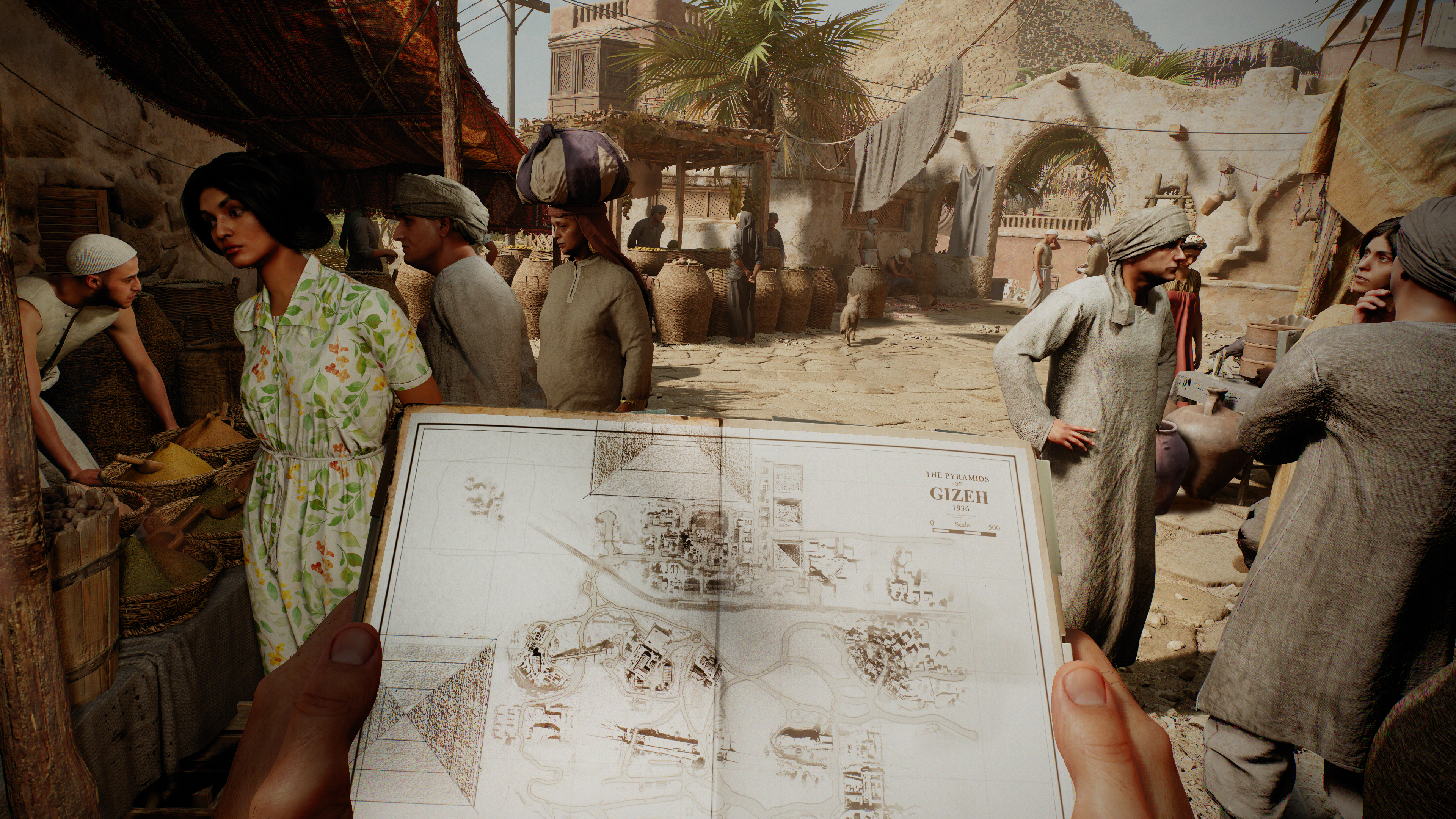
At the same time, deviating from the prescribed path or even just disrupting your AI companion's exact series of actions is instantly punished. In this case, many rooms are simply filled with scorpions that quickly sting you to death if you walk where you're not supposed to go. I don't think I was ever killed by Nazi gunfire during my playthrough, but these little monsters certainly drew blood. This is compounded by the inclusion of a stamina bar (Boo! Hiss!) which severely limits your sprinting and climbing, adding artificial tension to traversal (and making moving around the large map an unnecessary pain when you are back on top). .
There's no real sense of discovery or exploration, like you'd find in the recent Tomb Raider trilogy, but this sequence also isn't fluid or exciting enough to sit alongside the more linear settings of an Uncharted . The further The Great Circle strays from its basic stealth formula, the more it seems to struggle with the actual mechanics of Jones' escapades.
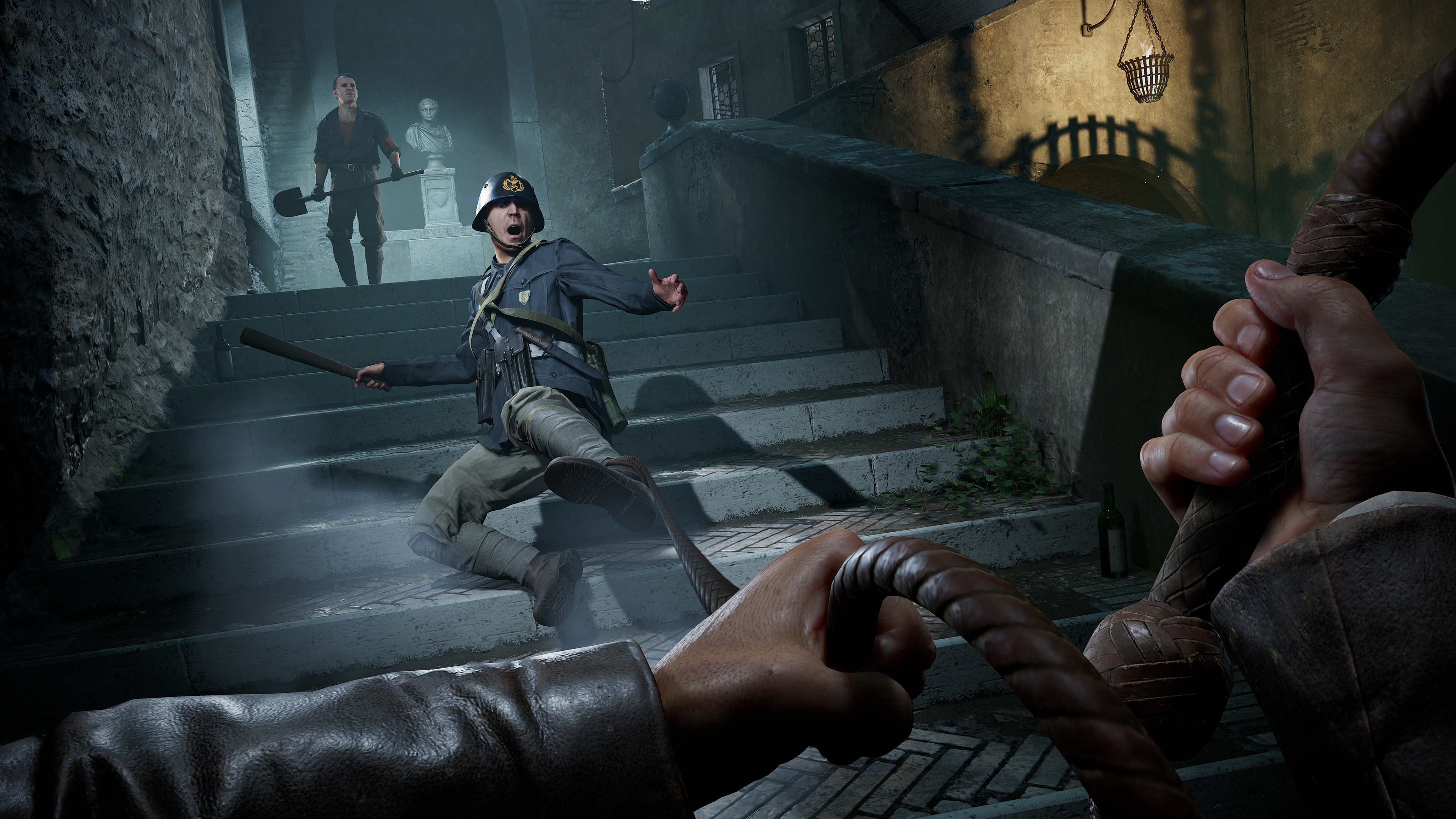
The environments are remarkably sumptuous and clearly carefully considered.
It's a shame, because while I don't think the game quite recaptures the adventure of the films, it does a wonderful job of recreating how they look and sound. The environments are remarkably lavish and obviously carefully researched – some mimicking specific locations from the films, like Marshall College, others real historical sites. Jones himself looks like he came straight from the big screen, and voice actor Troy Baker's impression of him is surprisingly accurate at times, even if he sometimes seems a little more like grumpy old Harrison Ford rather than to the charismatic young Harrison Ford.
The story weaves elegantly into the existing fabric of the series, using familiar characters effectively and introducing new ones that fit seamlessly into this cinematic world. Even in the short time I spent with the game, I could see the start of an interesting arc for Jones, one that seeks to give him more emotional depth without betraying his on-screen personality. Set between Raiders and The Last Crusade, this really feels like a part of canon, rather than just a spin-off.
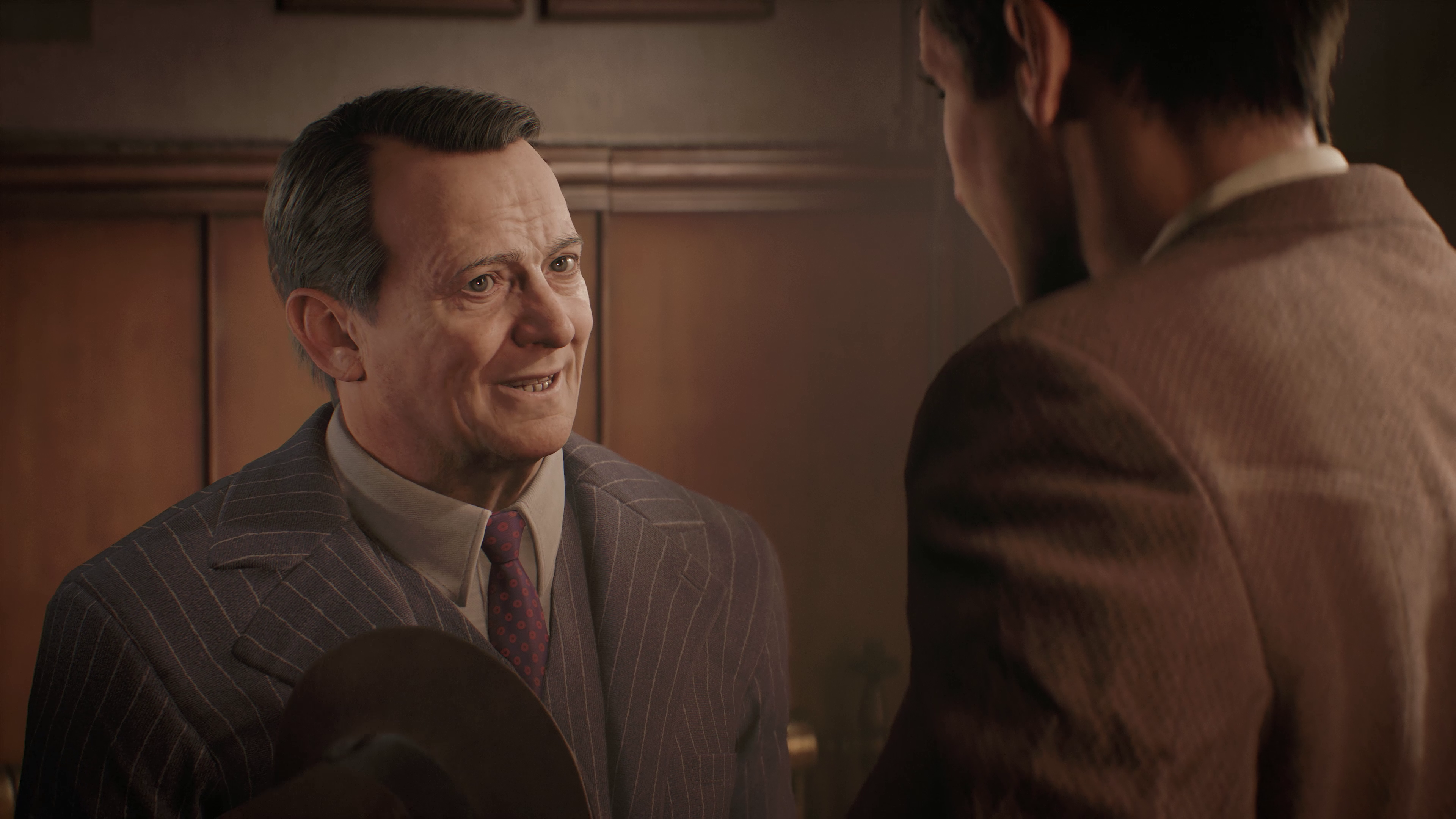
So the movie part is nailed – it’s the video game part that doesn’t really seem to click. If anything, the two seem to clash, with the wonderful realism of the cutscenes and environments making the more playful elements jarring. In one cutscene, I find myself truly touched by a moment where Jones greets an old friend and gives him a gift he received with emotion. About ten minutes later, I find out that I can sprint a little longer if I get Jones to steal lemons from the Nazis and eat them whole to increase his stamina. Maybe if he had known that in Raiders he wouldn't have had such a hard time running away from that rock?
There's a lot about The Great Circle that's impressive, particularly its lush visuals, and while its stealth is uneven, its small moments of chaos give it a distinct and charming personality. But the feeling I can't shake is that I'd rather play this action-adventure game that MachineGames offers than the compromise stealth game that it actually is.

